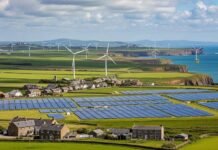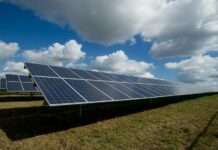Over the upcoming decade in South America, the expansion of the free market will play a pivotal role in propelling the growth of onshore wind energy. A recent insight revealed that the cumulative capacity of onshore wind projects will witness a substantial surge, with a projected addition of 41.2 gigawatts (GW) by 2032.
This surge in activity is expected to elevate the cumulative capacity to 75 GW by 2032. This stands in stark contrast to the nearly 34 GW capacity recorded at the close of 2022. The vanguard of this progress is anticipated to be Brazil, accounting for 23 GW and a notable 56% of the overall growth, closely trailed by Chile.
A noteworthy shift in the growth dynamics of the region has been noted. While growth had historically been driven by regulated processes via auctions, a fresh wave of free market initiatives is poised to reshape the landscape. Particularly, significant players in the commercial and industrial sectors are foreseen to transition from auctions to the unregulated free market to secure favorable power purchase agreements. This transition is projected to be a major impetus for the ongoing expansion across South American nations, prominently including Argentina, Brazil, Chile, and Peru. However, less mature markets like Colombia and Ecuador are likely to remain dependent on the regulated market for their growth.
Furthermore, the prospects of green hydrogen are positioned as a catalyst for long-term progress. Specifically, Brazil and Chile are anticipated to contribute 1.5 GW of capacity by 2032 to facilitate green hydrogen activities. Although there have been announcements of several multi-gigawatt projects, these ventures are currently in early developmental stages and are slated for significant scaling only after 2030.
Despite these optimistic projections, challenges persist within the onshore wind market. Grid limitations in wind-rich locales, exemplified by Colombia’s La Guajira, coupled with the escalating competition from solar energy, are projected to constrain the potential for capacity expansion. While wind energy has historically enjoyed advantages, the growing distribution and decreasing costs of solar energy are poised to chip away at these advantages over time.

































